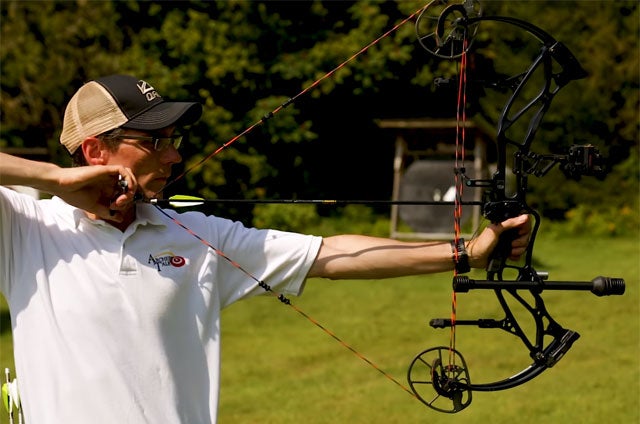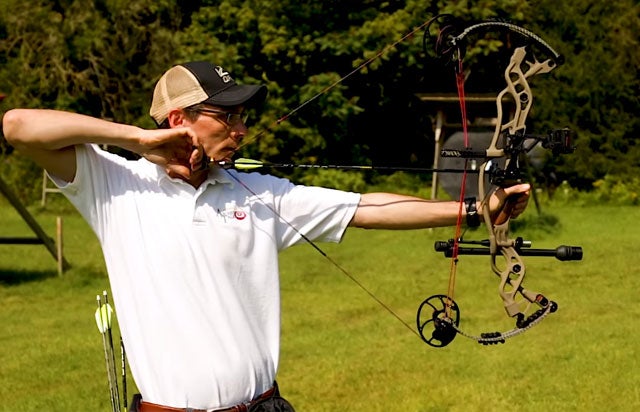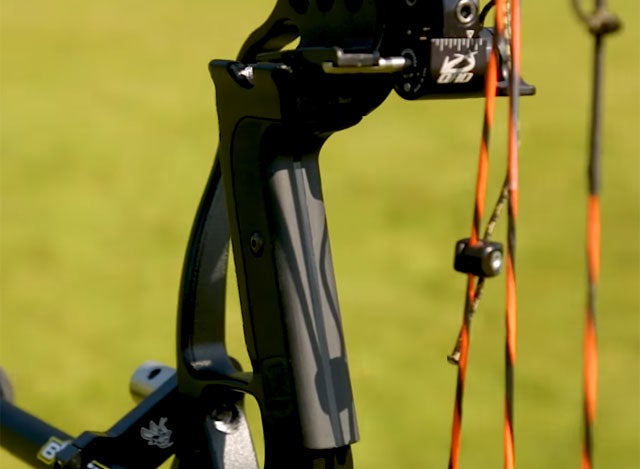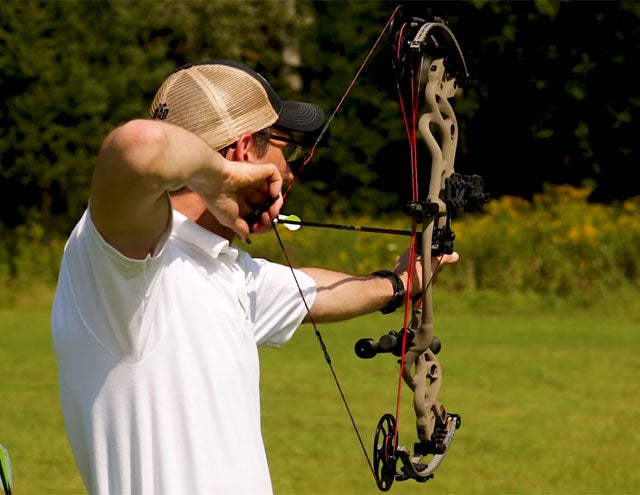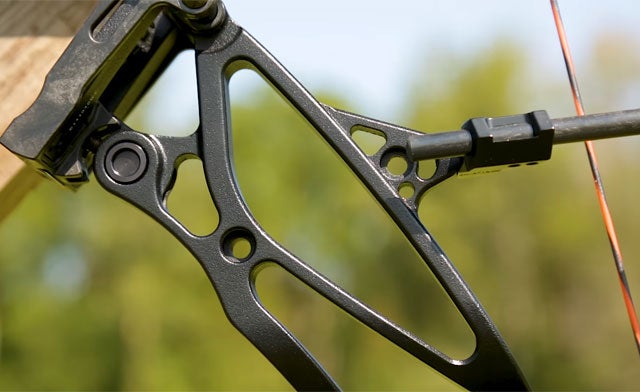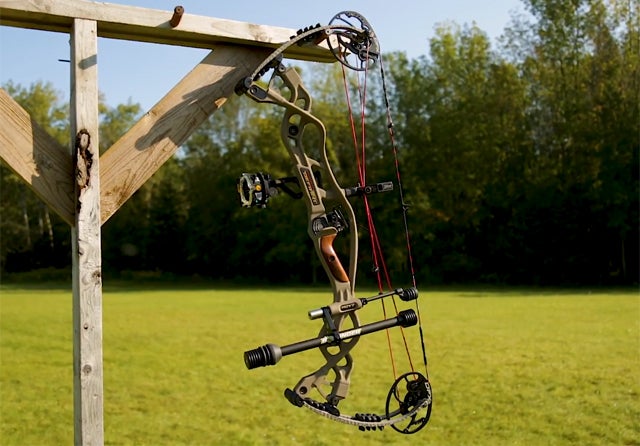Compound Bow Comparison: Hoyt Carbon Defiant vs. Bear LS-6 + Video
Lucas Cooney 11.17.17
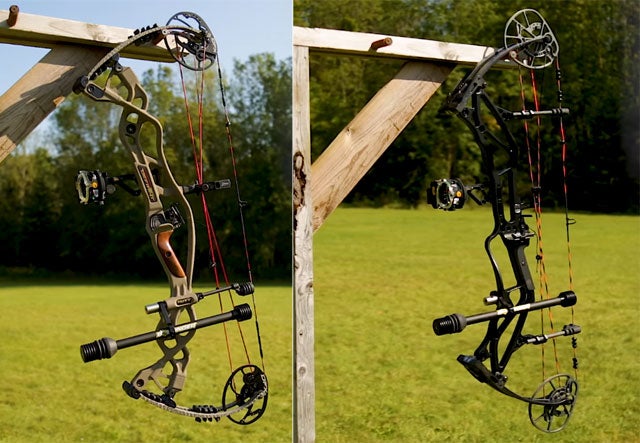
As part of our 2017 hunting bow project with sister site ArcheryTalk.com, which has included six individual bow reviews, we are doing some head-to-head bow comparisons. This week we see how the Hoyt Carbon Defiant compares to the Bear LS-6.
Both bows are outfitted with QAD Ultra Rests, Trophy Ridge React H5 sights and they share the use of a Bee Stinger Counterslide stabilizer.

Specs
The Hoyt Carbon Defiant has an axle-to-axle length of 31 inches, brace height of 7 inches, ASA rated speed of 331 feet per second and mass weight of 3.6 pounds.
The Bear LS-6 has an axle-to-axle length of 32 ¼ inches, brace height of 5 inches, IBO rated speed of 355 feet per second and mass weight of 4.2 pounds.
Speed
On paper, speed looks like a one-sided contest and when I put these bows through the chronograph that didn’t change much.
I had both bows set up with what I thought was a 29 ½-inch draw length and 60 pounds of draw weight. Using a 398-grain Gold Tip Valkyrie arrow, the Bear saw an average speed of 309 feet per second, which is blistering fast for a 60-pound bow. The Carbon Defiant clocked an average speed of 283 feet per second.
That is about what you’d expect given their rated specs — but when I put the LS-6 on a draw board its draw length was a full inch longer than the Hoyt. I eventually had to move the mods and stops to the 28.5-inch positions to get the proper draw length. The Bear still gets the edge, but the gap was closed considerably.
Draw Cycle
Draw cycle is a clear win for the Carbon Defiant. The draw is wonderfully smooth and easy to pull back time after time. The valley is quite generous, but it shoots best when pulling through the shot. This is the kind of bow I can shoot all day. The back wall has a bit of give to it, but I have no issue with that. As you’d expect with a smooth-drawing bow, letting down is easy work.
The Bear LS-6 has a predictably stiff draw, which is understandable considering its speed. The draw starts out fairly smooth, but there’s a bit of a harsh dump into the valley. That valley is also very short and the bow is eager to jump on you if you don’t keep pulling into the wall. This bow is a 70% letoff, but it could benefit from more. Letting down the bow is a bit of a challenge, which isn’t a surprise.
Grip
Both bows offer fairly comfortable–but vastly different–grips.
The LS-6 has a nice flat front, though I don’t love how the screws stick out on the side.
The Defiant’s wooden grip is wider than I normally prefer, but after getting used to it I really came to like how it felt in my hand.
Accuracy
Despite its shorter 31-inch length, the Carbon Defiant feels much more stable than I expected. At 20 and 30 yards, the Defiant was grouping as well as I’d expect of any good quality bow, but the surprise for me was its accuracy at long range. Of the six hunting bows I tested for this project, the Defiant was the most consistent for me at 60 yards.
As for the Bear LS-6, I was a bit worried how I’d handle its short 5-inch brace height, but that didn’t end up being an issue. The bow groups quite well for me out to about 40 yards. I shot a little better at long range with the Hoyt, but the Bear held its own in the accuracy department.
Tunability
When I’m shooting a lot of bows like I did for this project, I don’t have much time to really dig into tuning. But even with a basic tune, the Defiant was impressive. Once I got the rest into position and added a half-twist to the yoke, it was shooting bullet holes and grouping broadheads reasonably well with field points at 40 yards.
The Bear has proven to be a bit more finicky. I’ve not been able to get very good tears through paper with this bow, but it may be that I need slightly stiffer arrows. I’m sure a good tuner could get this bow shooting great with a little knowhow.
Fit and Finish
Fit and finish with both bows are pretty solid, but it’s hard to beat the Carbon Defiant in this category. I’m a big fan of the textured Buckskin finish on the Carbon Defiant riser, and the string, cables, and serving are holding up very well.
The Bear LS-6 is no slouch in this department either. The Shadow Black color on the riser is sharp-looking. There is a bit of serving separation near the D-loop, but nothing I’m worried about. My only issue is that my peep points left when the bow is at rest but takes a right turn at full draw and winds up centered. It works, but it’s a bit odd.
Price and Value
Realistically, the Pro Defiant would make more sense here as a comparison, as the Carbon Defiant is $550 more than the LS-6.
While the Carbon riser does offer a lot of value in terms of stiffness, weight, and the fact that it doesn’t get nearly as cold as aluminum when you’re hunting chilly mornings, I have to give the Bear LS-6 the nod in value.
Final Verdict
Even with the price gap, I’d have a hard time passing up the Hoyt Carbon Defiant if I had to choose one bow over the other. It excels in pretty much every category, while the Bear LS-6 had a few quirks that I can’t quite overlook.
